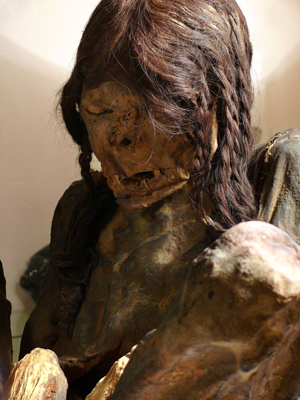Museum of Medical and Forensic Anthropology, Paleopathology and Criminalistics
Profesor Reverte Coma
Museo de Antropología Médica, Forense, Paleopatología y Criminalística Profesor Reverte Coma
- Facultad de Medicina
- Visit our website
- Facultad de Medicina.
Departamento de Medicina Legal, Psiquiatría y Patología.
Pabellón 7. Planta 3.
Plaza Ramón y Cajal.
Ciudad Universitaria. 28040. Madrid - museoafp@ucm.es
- 913 94 1606
- Ciudad Universitaria
- G,U,82,132
Collections
![]()
The museum has about 1500 pieces and a collection of 800 skulls. Collections are classified by the following themes:
-
Historical Research: Contains diverse scientific instruments and anthropometry.
-
Forensic Dentistry: Comprises material related to the jaw bone and tooth anatomy studies.
-
Criminalistics: Made up of various weapons used in crimes and other material which represent prison life.
-
Medical and Forensic Anthropology: Comprises diverse osseous material related to taphonomic effects and cranial trepanation.
-
Evolutionary Anthropology: Includes replicas of hominids and a selection of primates.
-
Paleopathology: Contains osseous material with diverse pathologies.
-
Ethnomedicine: Contains old pharmaceutical products as well as a “Botamen Merck”.
-
Cultural Anthropology: Made up of various fetishes, amulets and deformed skulls.
-
Historical mummifications: Comprises Andean mummies and Egyptian heads.
History
![]()
The origin of the museum began in 1980 when the Laboratory of Anthropology in the School of Forensic Medicine was established, and Dr. Reverte was in charge of the laboratory. The laboratory collected a wide range of materials from different sources: courts, ossuaries from diverse places of the Iberian Peninsula, universtiy and private collections, together with the School of Forensic Medicine Judicial Collection which belongs to the Faculty of Medicine, San Carlos. All these pieces had historical and educational value, and Dr. Reverte decided they should be exhibited to the public.
In 1994, by a Rector"s Decree the institution became official under the current name.
In 2004 Dr. Reverte definitely left his position as Director of the museum and Dr. José Antonio Sánchez Sánchez was appointed in his place. He carried out reform and renovation of the museum collections. The museum reopened in July 2009.


